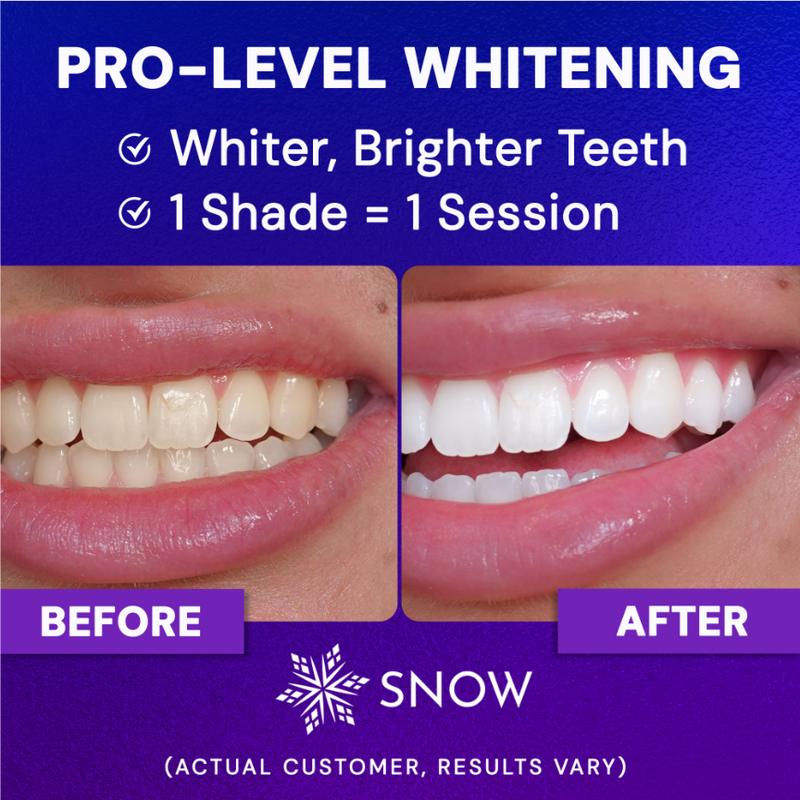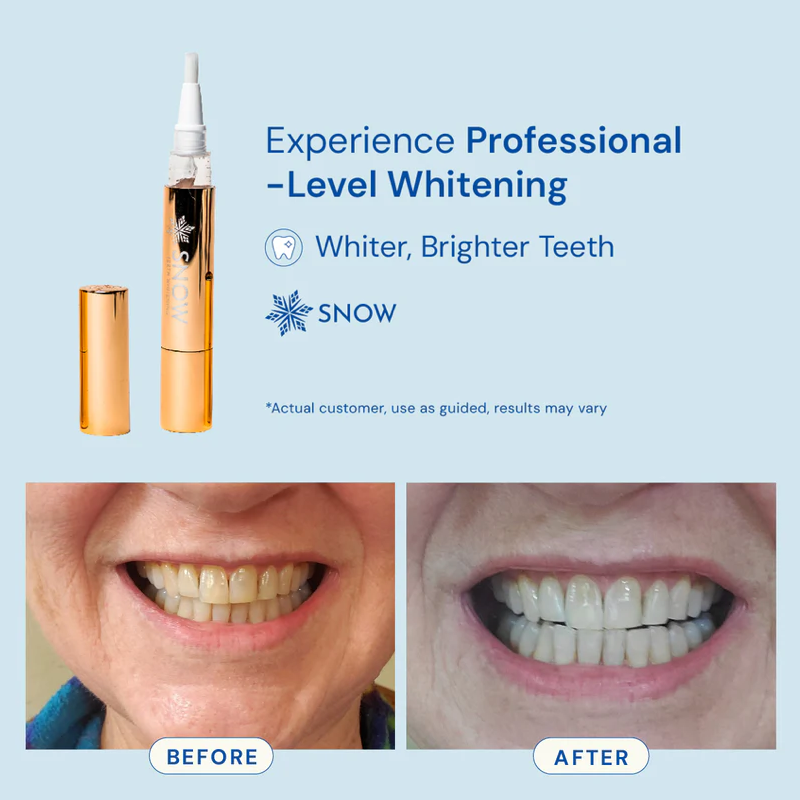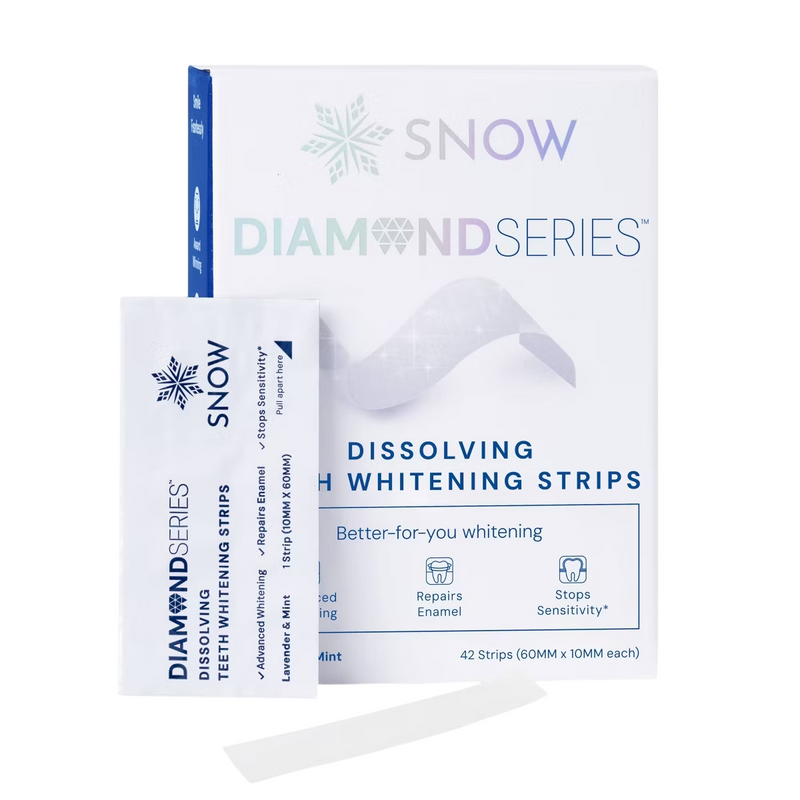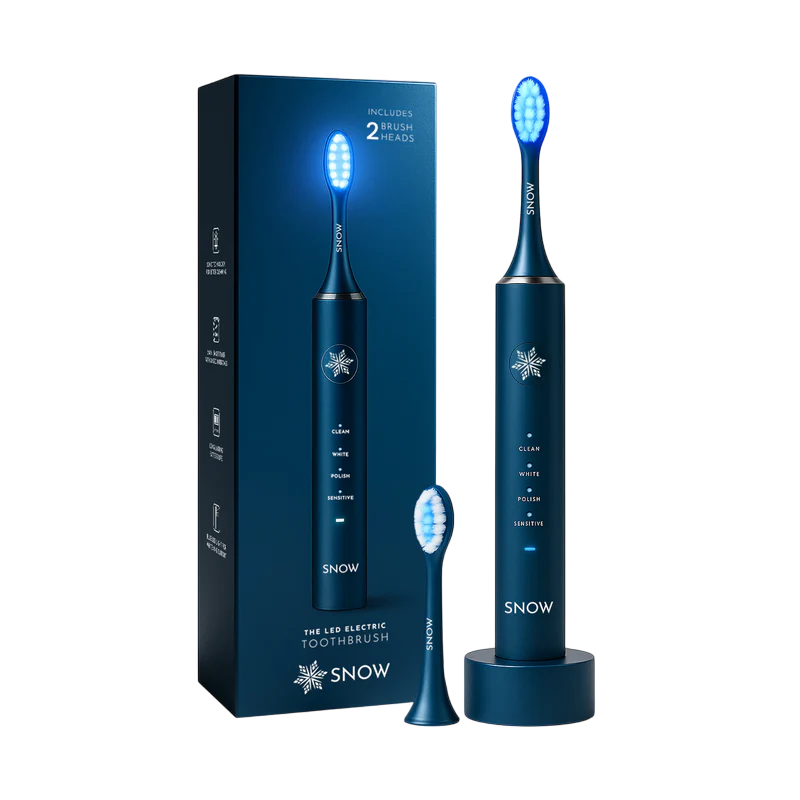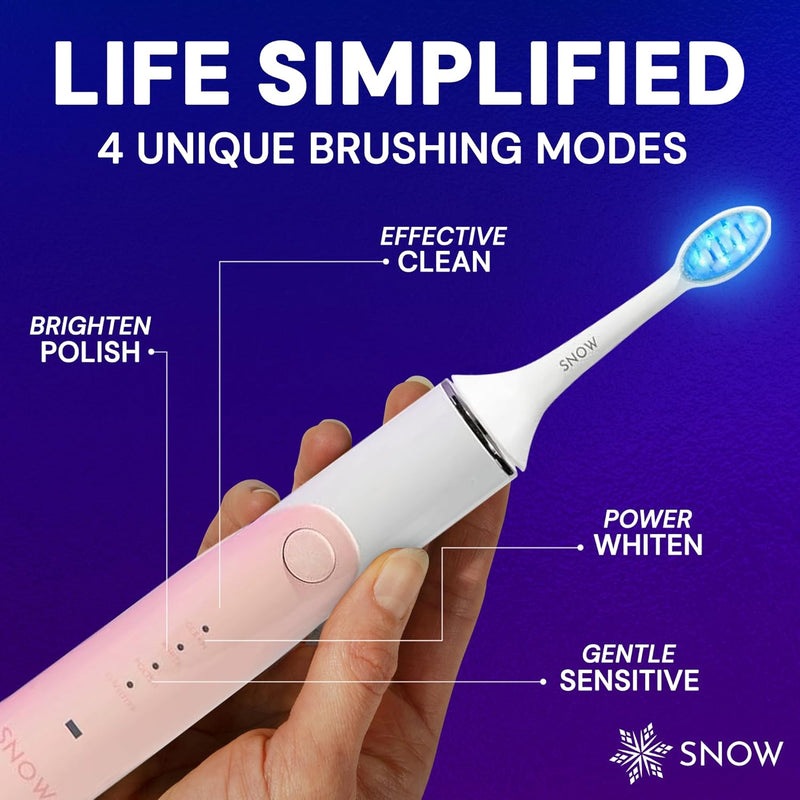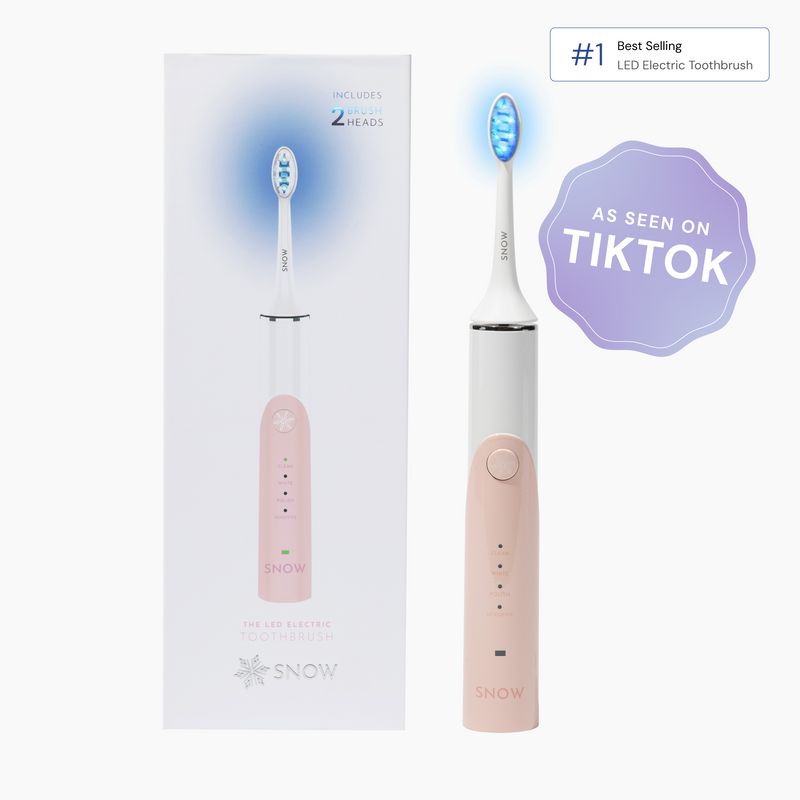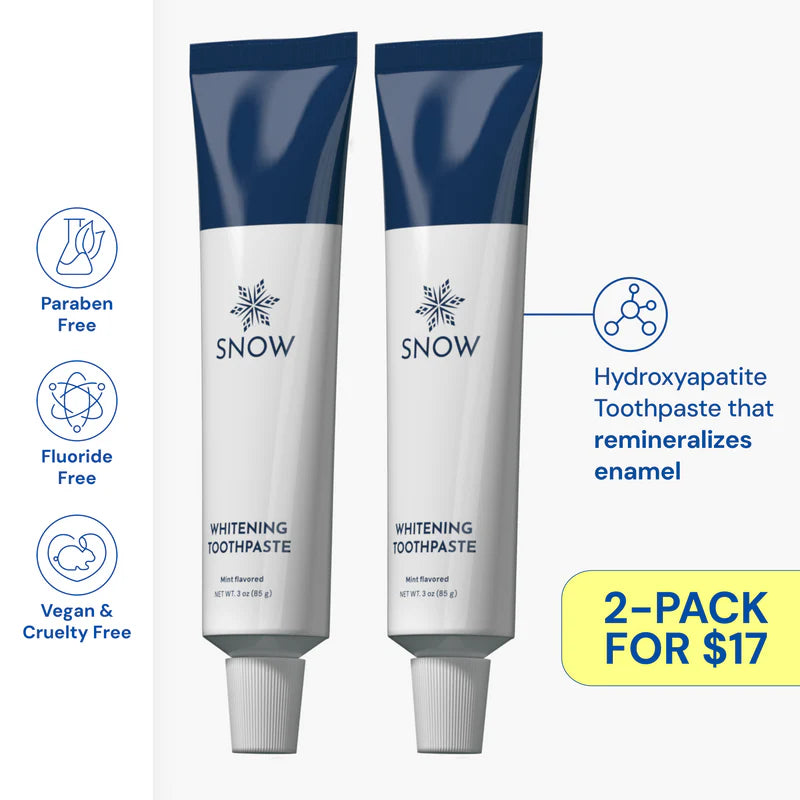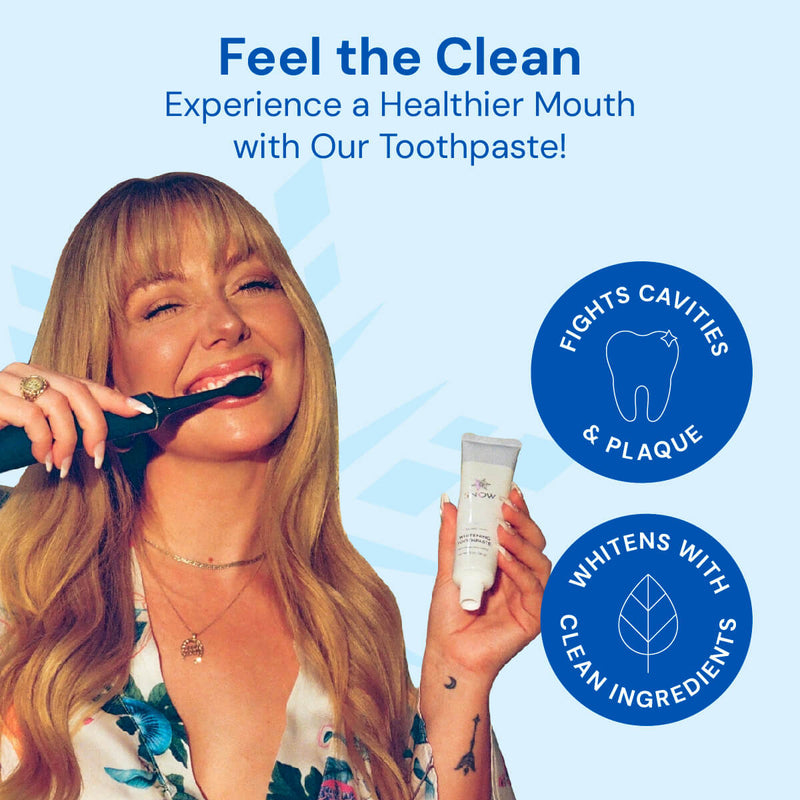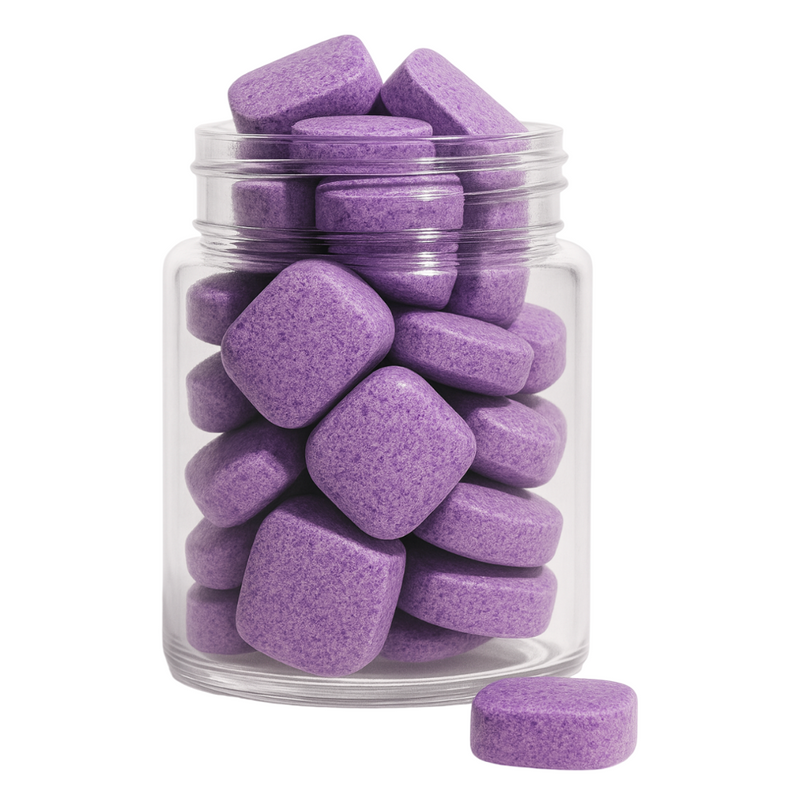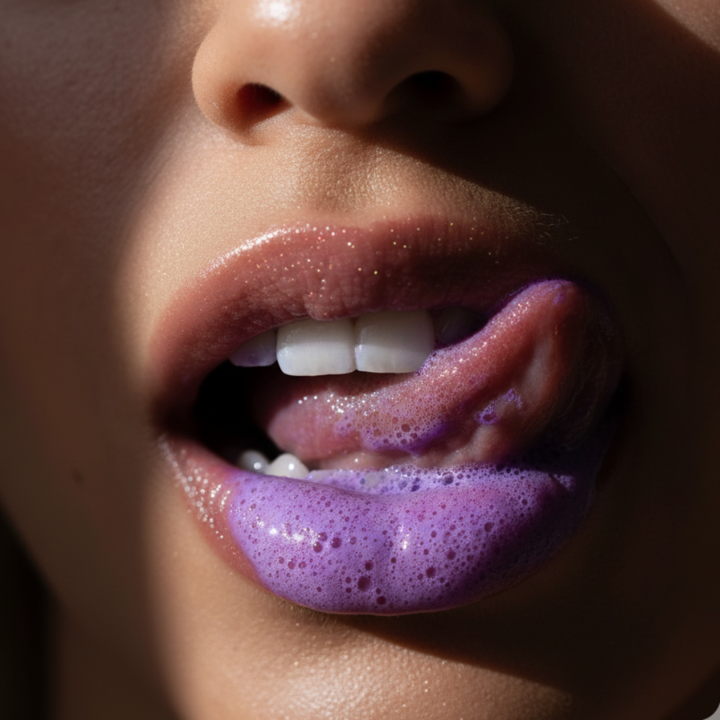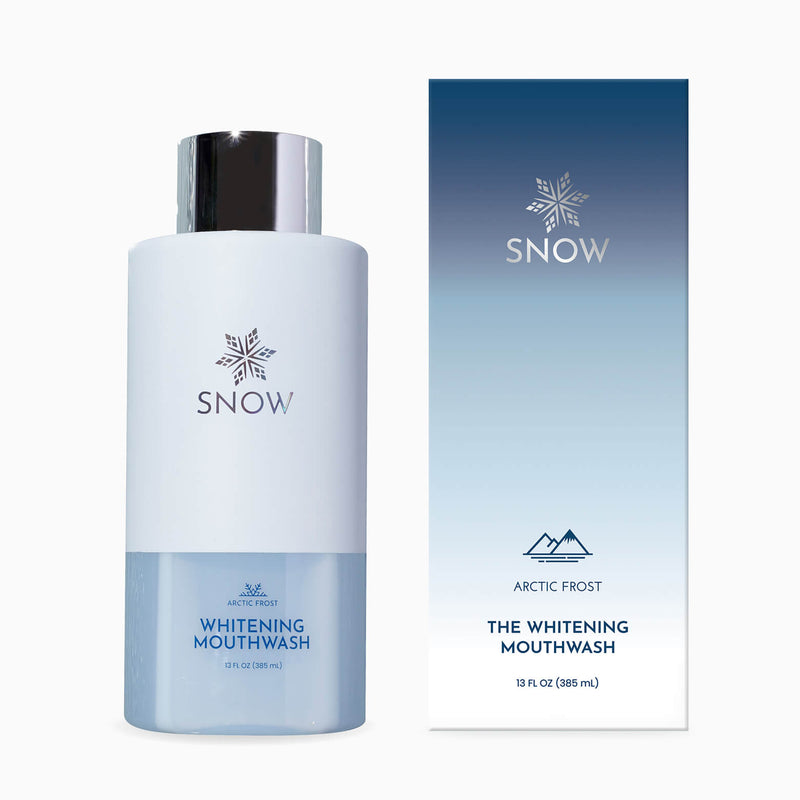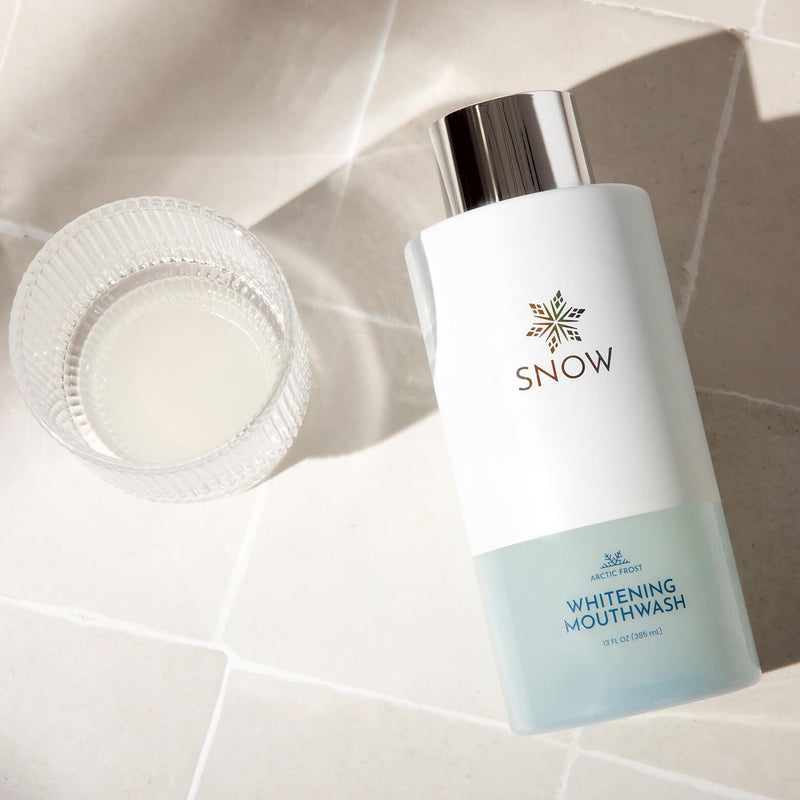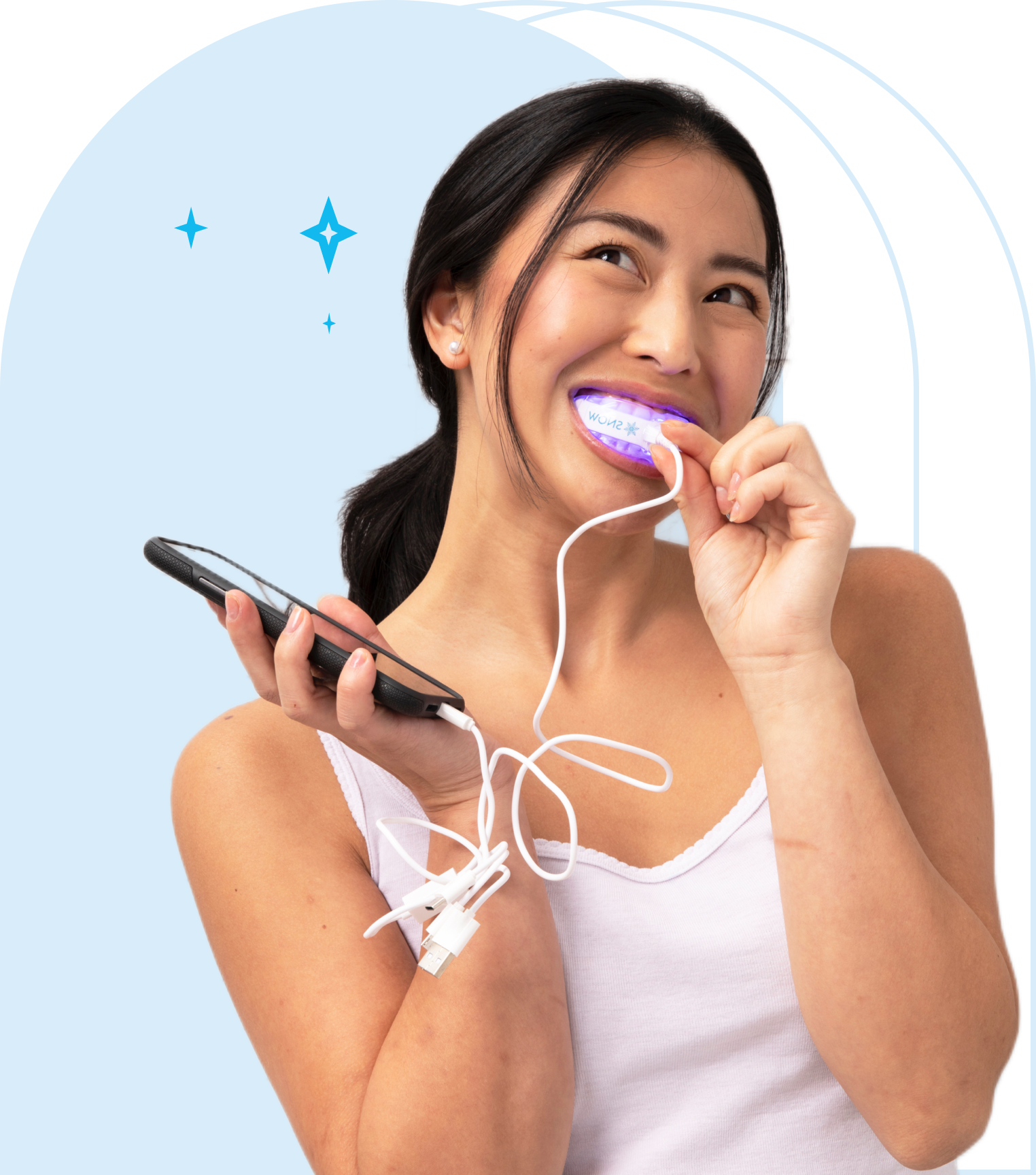Ever noticed little white spots on your teeth and wondered, “What is the white hard stuff on teeth?”
The answer is pretty simple - it’s caused by calcium build-up which can lead to dental plaque and hypocalcification in some cases.
By stepping up your oral hygiene and using our top at-home whitening products, you can get to the bottom of what causes this calcium build-up and cure the white, hard stuff on your teeth once and for all.
Let’s jump in!
How to Remove White Hard Stuff on Teeth Without a Dentist
These white spots on teeth mean one thing - calcium build-up, which causes all kinds of issues like bad breath, yellow teeth, and, in serious cases, infection.

There are different kinds of calcium build-up that cause the white, hard stuff on your teeth, like:
- dental calculus
- calcium deposits
- tartar
- plaque
Tips To Help Control And Reduce White Hard Stuff On Teeth
While you can’t just wish away these unsightly calcium deposits, our three brilliant tips and top at-home whitening products can show you how to remove white spots on teeth and restore your sparkling smile.
1. Brush Your Teeth Twice A Day
This may be a no-brainer for most, but brushing your teeth twice a day for about two minutes can sufficiently lower plaque build-up and help you prevent tooth decay and gum disease in the long run. We know that time is money, and it’s hard to find time to breathe, let alone brush for two minutes, but trust us, it will be worth it.
Start by using a teeth-whitening toothbrush like ours with soft bristles to reach all the nooks and crannies, including the white stuff at bottom of teeth. After putting it to the test, we found that it’s great for lifting heavy stains as well as plaque and tartar builld-up, keeping your teeth clean, and boosting your overall whitening experience.
Pair our electric whitening toothbrush with our top whitening toothpaste and teeth-whitening powder to lift heavy plaque and tartar while protecting your tooth enamel for a healthier and more radiant smile.
2. Floss Regularly
Brushing is essential, but it can’t always reach the hard-to-reach white specks on teeth. That’s why you should invest in flossing too.
Our whitening water flosser gets right under your gum line to clean food, bacteria, and plaque caught between your teeth to prevent white spots on teeth dehydration. It’s cordless too, so you can use it any time and anywhere in your home - even your office or cubicle.
3. Use OTC Tooth Whitening Products
Based on our first-hand experience, we’ve found that the best way to get rid of dental build-up and tartar is by adding our whitening solutions to your dental routine.
When we trialed this product, we discovered that our teeth-whitening foam boosts your nightly brushing routine by gently removing calcium build-up and safely cleaning your teeth and dental devices while you sleep.
After trying out these products, our teeth-whitening strips and whitening mouthwash work fantastically to brighten your smile and prevent plaque from setting up shop in your mouth.
If you’re looking for an affordable, diamond-worthy whitening experience, we highly recommend our SNOW teeth whitening kit. It has safe and effective whitening wands, serum, and an LED mouthpiece guaranteed to remove tartar build-up and protect your enamel and gums.
With the right products, you won’t have any white spots on teeth after whitening, leaving you to achieve a gorgeous smile without spending a small fortune at the dentist!
Conclusion
Tackling the white hard stuff on your teeth caused by calcium build-up doesn’t need to lead to dental plaque and hypocalcification anymore.
By investing in oral hygiene and using our stellar whitening products, you can get rid of plaque and tartar and whiten your smile exponentially.
So, why not check out SNOW’s wide range of teeth whitening products and order today to achieve the plaque-free smile you deserve?
Did you find the blog helpful? If so, consider checking out other guides:
- Best Teeth Whitening Products to Use at Home
- Professional Teeth Whitening
- Permanent Teeth Whitening
- Types of Teeth Whitening Options
- How Often Should You Whiten Your Teeth?
- How to Whiten Between Teeth
- What Is Teeth Whitening?
- How to Keep Teeth White
- How White Are My Teeth?
- Should I Whiten My Teeth?
- Are White Teeth Attractive?
- Do You Brush Your Teeth After Whitening Strips?
- White Spots on Teeth After Whitening Strips
- Can You Eat After Teeth Whitening Strips?
- How Long Do Teeth Whitening Strips Last?













































